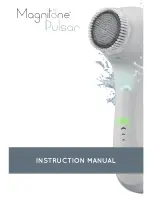
www.petsafe.net
9
• Design a layout that is suitable for your yard. Sample layouts are provided in this
section, and a grid for designing your layout is provided in the back of this guide.
• Always use gradual turns at the corners with a minimum of 3 foot radius to produce
a more consistent boundary (
2B
). Do not use sharp turns, as this will cause gaps in
your boundary.
• To properly contain your pet, we recommend setting a Boundary Width for the
Warning and Static Correction Zones to approximately 12-20 feet (6 to 10 feet on
each side of the wire).
• Avoid making passageways too narrow for your pet to move about freely (e.g.,
along the sides of a house).
• The Receiver Collar can be activated inside the house if the Boundary Wire runs
along the outside wall of the house. If this occurs, remove your pet’s Receiver Collar
before bringing him inside, decrease the range using the Boundary Width Control
knob or consider an alternative layout.
Sample Layouts
2C
2D
Sample 1:
Perimeter Loop
(Single Loop)
The
Perimeter Loop is
the most common
layout. This will
allow your pet to
freely and safely
roam your entire
property (
2C
). It
can also protect
gardens, pools and
landscaping (
2D
).
D
E
A
C
B
2E
Sample 2 (2E): Perimeter Loop
Using Existing Fence (Single
Loop)
This layout allows you to
include your existing fence as part
of your layout and keep your pet
from jumping out or digging under
your existing fence. It reduces the
amount of wire which will need
to be buried. From the Fence
Transmitter, run the wire to
A
,
A
to
B
,
B
to
C
,
C
to
D
,
D
to
E
,
E
to
A
,
twist the wires from
A
back to the
Fence Transmitter. See the “Install
the Boundary Wire” section for
more information on attaching the
wire to a fence.
Summary of Contents for IN-GROUND FENCE PIG00-10773
Page 35: ...www petsafe net 35 ...










































